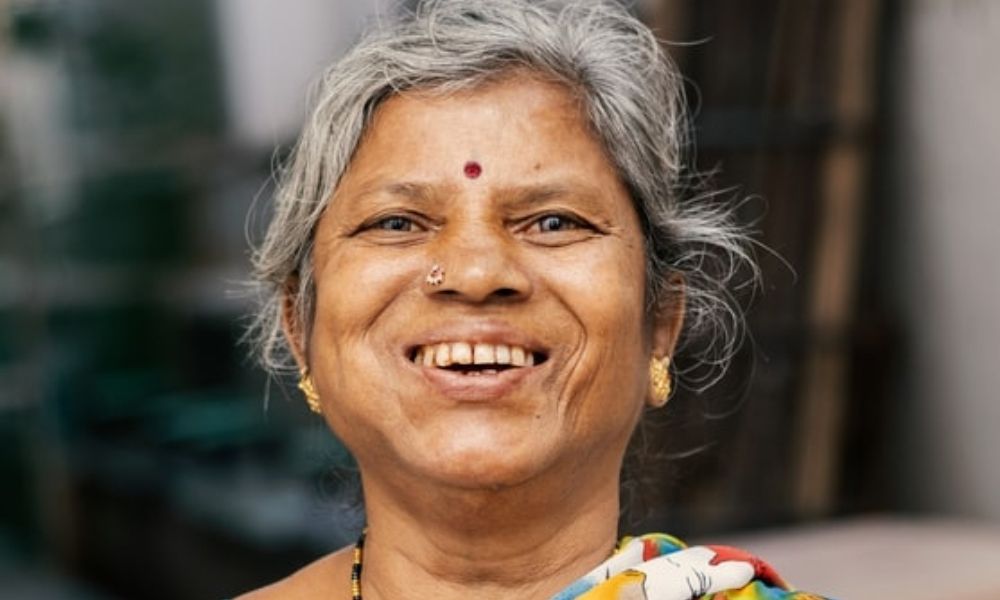
Image Credit: Unsplash
Women Face Inequality Even In Pension Benefits
Writer: Ratika Rana
Her primary objective is to inform, promote, educate and cultivate readers through writing.
India, 8 Aug 2021 1:43 PM GMT
Editor : Madhusree Goswami |
A mountain girl trying to make it big in the city. She loves to travel and explore and hence keen on doing on-ground stories. Giving the crux of the matter through her editing skills is her way to pay back the journalism its due credit.
Creatives : Ratika Rana
Her primary objective is to inform, promote, educate and cultivate readers through writing.
India would take another 136.5 years to achieve gender parity in all spheres.
There is no denying that gender gap exists in all spheres of life. Right from childbirth to education, securing a job and fighting for equal pay, and even in retirement, the gender prejudice is existent. Women, in general, have a lower private personal wealth in retirement than men. The Global Gender Gap Report revealed that India would take another 135.6 years to attain gender parity. A comprehensive study showed that women receive nearly 40 per cent less pension than men, and the divide only widens by age.
India became the 27th member of the Organisation of Economic Cooperation and Development (OECD) in 2001. A report published by the international organisation mentions that the gender pension gap or the difference between the retirement income that both men and women receive among its member countries is 26 per cent. The divide is a result of many interconnected and complicated factors related to society, education, childcare, household chores, employment and a collective and individual bias.
A study titled 'Towards Improved Retirement Savings Outcome for Women' by OECD mentioned that while retirement savings arrangements cannot rectify all that has been going wrong for ages, a new design can implement a few changes to narrow down the increasing gender divide and gender pension divide. A problem can only be assessed holistically by analysing the causes.
Causes of A Wider Gender Pension Gap
Women put in lesser working hours than men. Gender stereotypes in conservative families that lead to early dropout of education can be one of the foundational causes. Secondly, several women across India face restrictions at home, due to which they are not able to work for an adequate number of hours. Thirdly, if both partners are working after marriage, the onus of dropping out of jobs post-childbirth lies heavily on the woman's shoulders. A report titled "Predicament of Returning Mothers" by Ashoka University suggests that 73 per cent of Indian women leave jobs after giving birth.
Another report by Genpact Centre for Women Leadership showed that more than 50 per cent of women leave their jobs by the age of 30 years to provide care for children. Out of those who join to return to the workforce, 48 per cent of women drop out again within four months. It also mentioned that out of the women who return to work, only 27 per cent of the advance in their careers while a meagre 16 per cent go on to lead teams and hold senior-level positions.
The gender divide does not only happen at the societal level. The study asserts that women face challenges at several levels. Most women face guilt at an individual level. At a familial level, they face the need to 'compromise' for the sake of their loved ones. At a professional level, they think that their supervisors consider them inefficient. And lastly, societal norms have always emphasised a mother's role as a woman over a working woman.
Another issue that women face both at home and the workplace are participation restrictions. Even though it is the 21st century, most households, particularly in the rural areas, do not allow women to voice their opinions and speak up for their rights. When such a condition is imposed since birth, the womenfolk accept being subservient and consider their existence inferior to that of men. These notions transcend ages, and so it increases the gender gap.
Suppose working women have to battle these external pressures to be economically independent when they are young. In that case, they will invariably have to suffer the consequences at the later stages, most likely their retirement age. The wide gap in the pension of the genders is universal. The gap might be more expansive in Eastern countries than in Western countries. But there is no denying the fact gender pensions gap exists across borders.
The latest Gender Gap report by WEF mentions that the gap has widened by 62.5 per cent in India. This gap eventually leads to a contrasting pension amongst men and women. Such divides occur primarily due to inadequate representation of women in politics, leadership and technical roles, falling labour force participation rate of women, income inequality and low male to female literacy rate. The then Labour Miinister Santosh Gangwar had said that India is making efforts to reduce the gender gap in labour force participation.
Lesser women's participation in the organised workforce of the country makes women ineligible for any pension. Therefore, even if women form a significant part of the unorganised workforce for their entire lives, they are not entitled to pensions. The government needs to hold awareness campaigns that encourage women to register themselves to the local authorities as employees of their organisation. There are several schemes from the government's side that women belonging to the senior citizens' category can avail of.
Much-Needed Policy Changes
The WEF suggested some policy changes that the government must make to reduce the gender gap for retirement savings arrangements. This includes relaxing the eligibility requirement for women to join the retirement savings plan under the Centre. When women join the workforce, there should be a system for their automatic enrollment into the official records. Apart from that, the women who invest in saving plans must be incentivised to encourage others to join the course.
There are times when women do not have enough money to invest in saving plans consistently. Therefore, they should be allowed the liberty to put in money in the investment plan whenever it is possible for them to. A tailor-made telecommunication system that can spread awareness to women from low-income families in rural areas can prove beneficial. In primary education institutions and at homes, girls should be taught to speak up for themselves. This will inculcate in them the habit of questioning discrimination at several fronts in life.
The government must ensure that all the retirement benefits that an organisation provides are gender-neutral. Women in India have a better life expectancy than men. Therefore, they should be entitled to more pension-related benefits than men. A neutral, flexible and dynamic approach to address the gender gap crisis that eventually leads to a widening gender pension gap must be addressed in an organised manner through all tiers of the government.
Also Read: Sarla Thukral: Google Celebrates India's First Woman Pilot With A Doodle
 All section
All section














